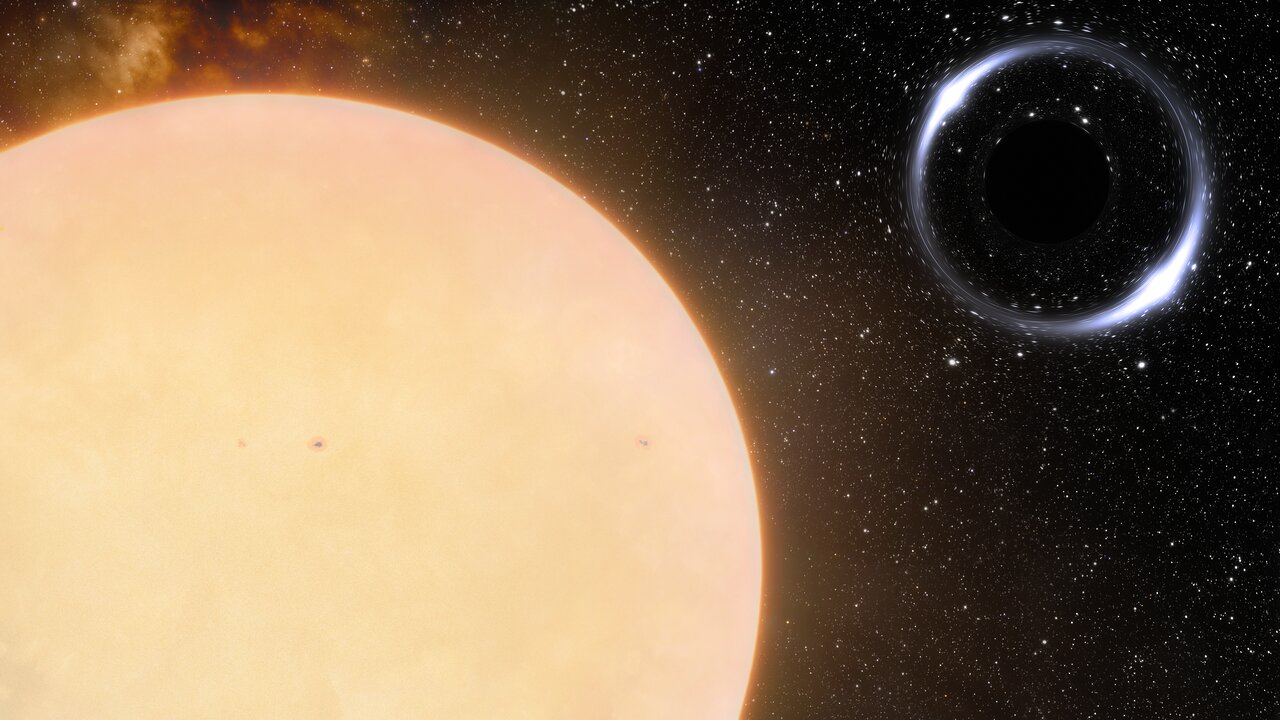CfA/NOIRLab: Astronomers Discover Closest Black Hole to Earth
Posted: Fri Nov 04, 2022 4:03 pm
Astronomers Discover Closest Black Hole to Earth
Center for Astrophysics | Gemini Observatory | NOIRLab | 2022 Nov 04
New method finds black hole closest to Earth
Max Planck Institute for Astronomy | Max Planck Society | 2022 Nov 04
A Sun-like star orbiting a black hole ~ Kareem El-Badry et al
Center for Astrophysics | Gemini Observatory | NOIRLab | 2022 Nov 04
First dormant, stellar-mass black hole in our cosmic backyard revealed.
Astronomers have discovered the closest black hole to Earth, which the researchers have dubbed Gaia BH1. The dormant black hole weighs about 10 times the mass of the Sun and is located about 1600 light-years away in the constellation Ophiuchus, making it three times closer to Earth than the previous record holder, an X-ray binary in the constellation of Monoceros.
The discovery was made possible by making exquisite observations of the motion of the black hole's companion, a Sun-like star that orbits the black hole at about the same distance as the Earth orbits the Sun. ...
Black holes are the most extreme objects in the universe. Supermassive versions of these unimaginably dense objects likely reside at the centers of all large galaxies. Stellar-mass black holes — which weigh approximately five to 100 times the mass of the Sun — are much more common, with an estimated 100 million in the Milky Way alone. Only a handful have been confirmed to date, however, and nearly all of these are 'active,' meaning they shine brightly in X-rays as they consume material from a nearby stellar companion, unlike dormant black holes which do not.
Though there are likely millions of stellar-mass black holes roaming the Milky Way Galaxy, those few that have been detected were uncovered by their energetic interactions with a companion star. As material from a nearby star spirals in toward the black hole, it becomes superheated and generates powerful X-rays and jets of material. If a black hole is not actively feeding (i.e., it is dormant) it simply blends in with its surroundings. ...
The team originally identified the system as potentially hosting a black hole by analyzing data from the European Space Agency's Gaia spacecraft. Gaia captured the minute irregularities in the star's motion caused by the gravity of an unseen massive object.
To explore the system in more detail, the team followed-up with 39 observations over the course of four months, taken with six different telescopes around the world. ...
New method finds black hole closest to Earth
Max Planck Institute for Astronomy | Max Planck Society | 2022 Nov 04
A Sun-like star orbiting a black hole ~ Kareem El-Badry et al
- Monthly Notices of the RAS (02 Nov 2022) DOI: 10.1093/mnras/stac3140
- arXiv > astro-ph > arXiv:2209.06833 > 14 Sep 2022 (v1), 27 Oct 2022 (v2)
